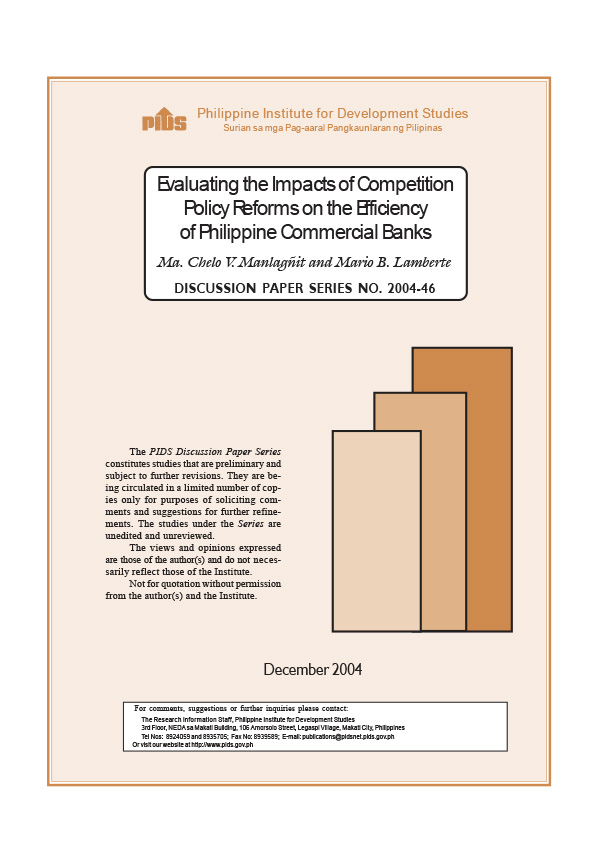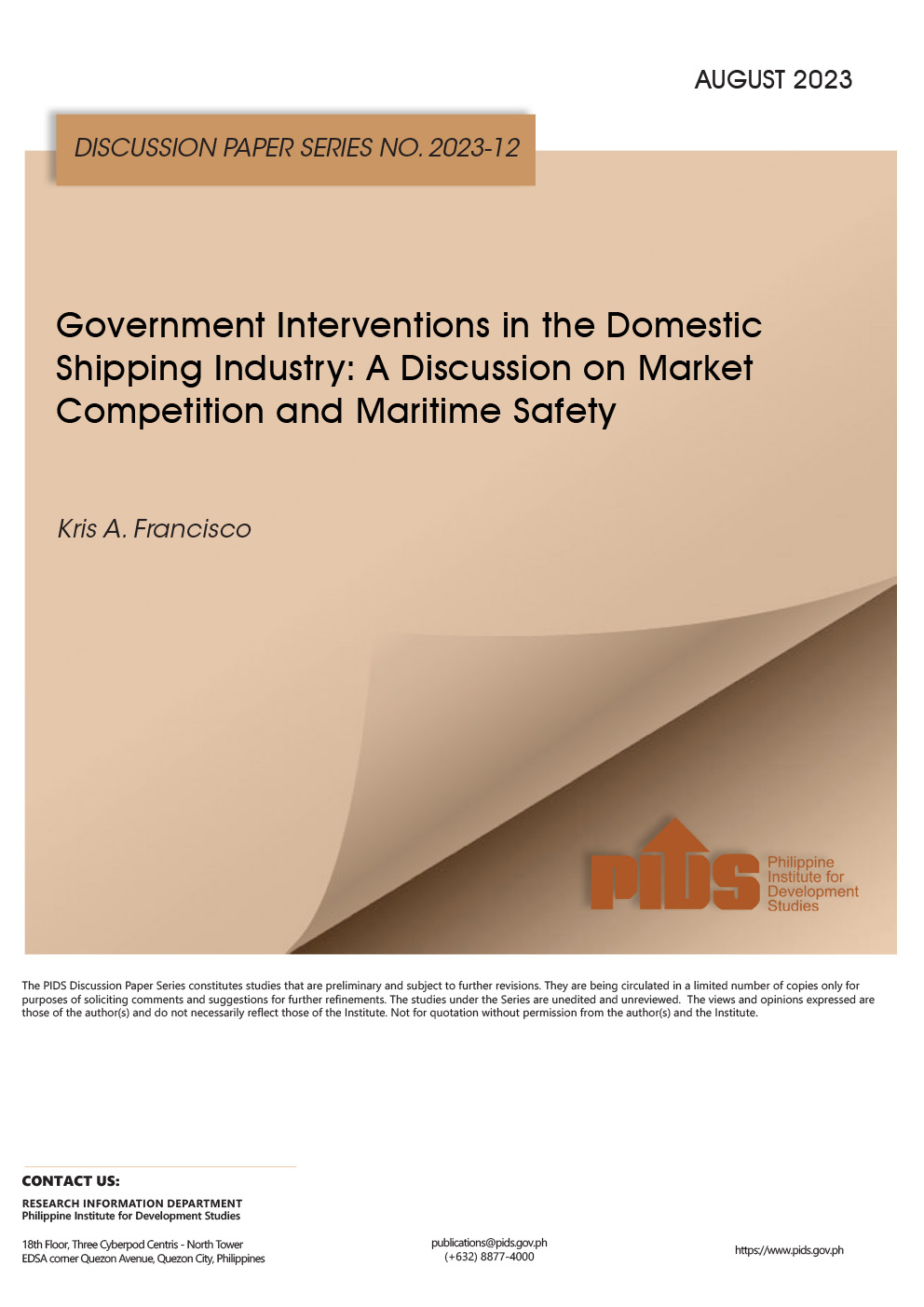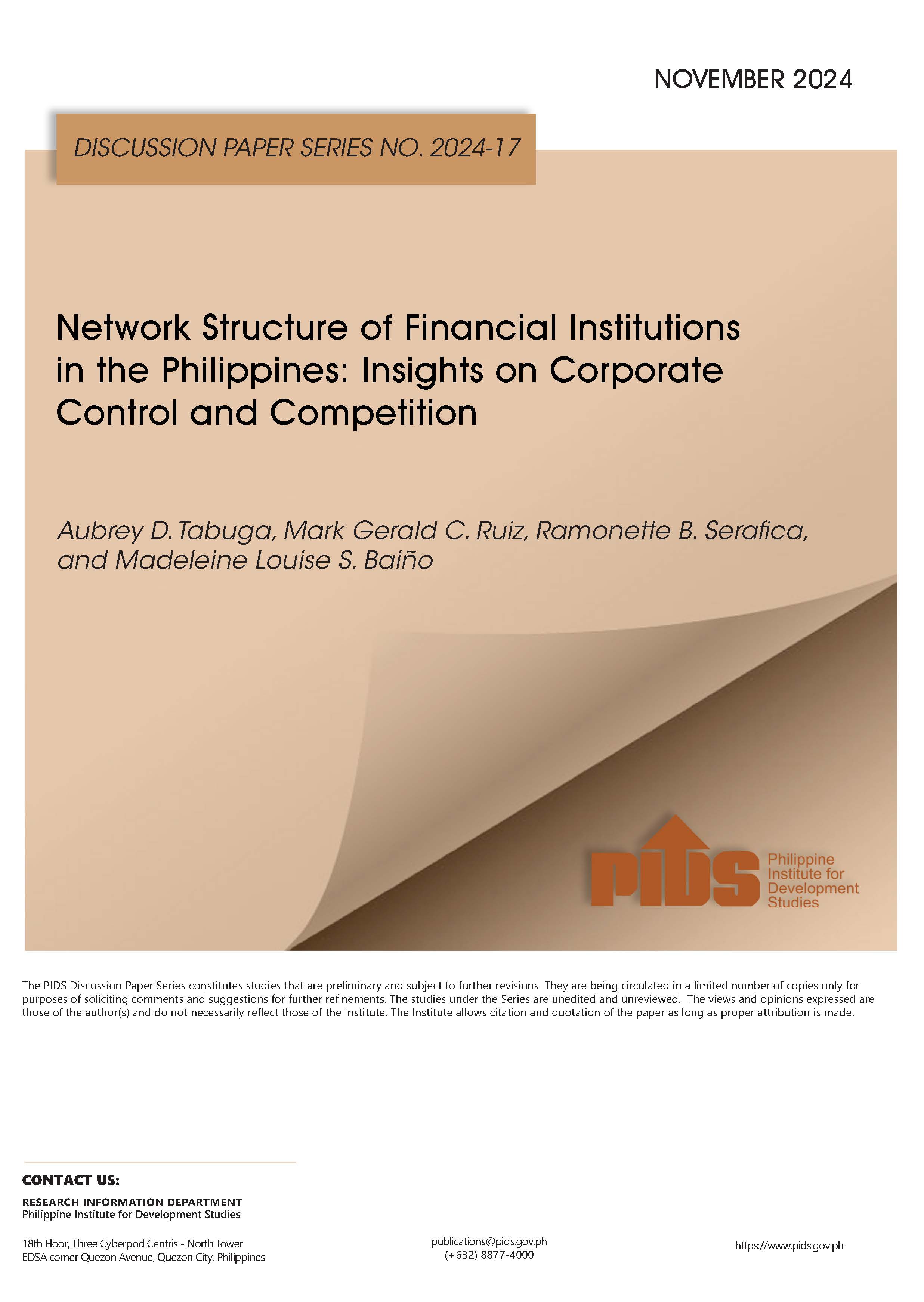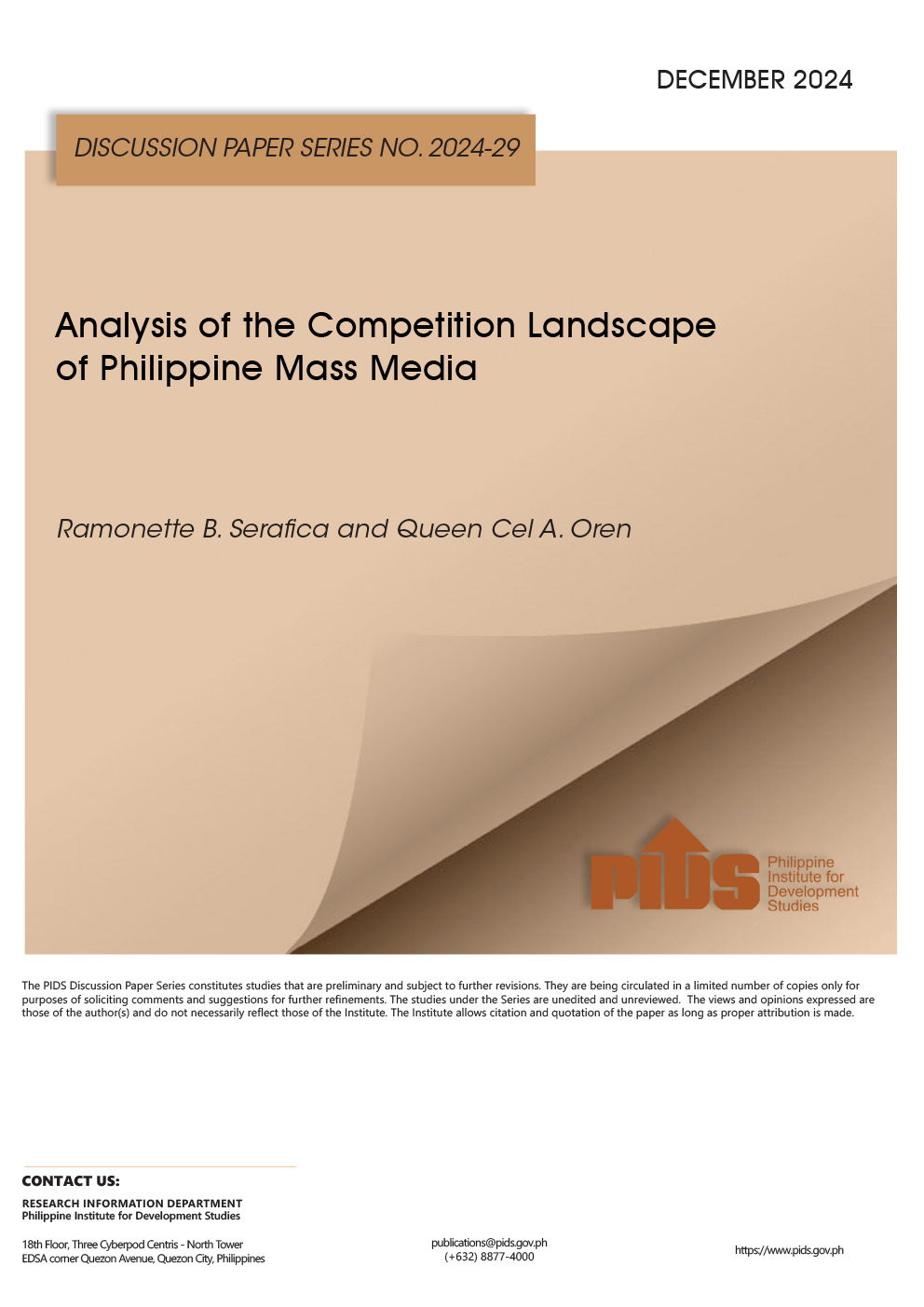This paper has attempted to examine the impacts of competition policy reforms on the efficiency of the Philippine commercial banking system. It uses the stochastic frontier approach to come up with estimates of profit efficiency and cost inefficiency measures. The results are quite interesting. First, the average measured profit efficiency is 0.85, implying that on the average the commercial banks are using only 85 percent of their resources efficiently compared to the best practice commercial bank in the system producing the same output and facing the same conditions. On the other hand, the average measured cost inefficiency of the commercial banks is 1.39, suggesting that, on average, 39 percent of the commercial bank’s costs are wasted relative to the best-practice commercial bank in the system producing the same output and facing the same conditions. Second, some improvements in banks’ profit and cost efficiency can be observed after the liberalization of the entry of foreign banks in 1994, but these improvements were halted when the East Asian financial crisis occurred. Some improvements in profit and cost efficiency can again be observed after the passage of the General Banking Law in 2000 that liberalized further the entry of foreign banks. Third, small banks are found to be more profit and cost efficient than large banks. Fourth, foreign banks are generally more profit and cost efficient than domestic banks. However, these differences widen during crisis period and narrow during stable economic conditions. Fifth, profit efficiency of merged banks dropped more sharply than nonmerged banks after 1998, but eventually recovered and approximated that of nonmerged banks in 2002. Also, merged banks’ cost inefficiency dropped sharply in 2000 and since then has remained much lower than that of nonmerged banks. Sixth, some factors, such as agency problem, governance and market characteristics appear to be significantly correlated with measured efficiencies of banks. These results have important policy implications. First, the liberalization of the banking system has generally produced positive results in terms of improving profit and cost efficiencies of banks. Second, improvement in profit and cost efficiencies of domestic banks brought about by greater competition cannot be sustained unless it is accompanied by improvement in prudential regulations and supervision. Third, M&A policy pursued by the Bangko Sentral ng Pilipinas appears to be complementary policy for improving profit and cost efficiencies of banks. Fourth, understanding the nature and extent of the impact of some correlates of measured efficiencies can help authorities in designing appropriate regulatory and supervisory framework for banks.
Citations
This publication has been cited 7 times
- Aldaba, Rafaelita M.. 2005. The impact of market reforms on competition, structure and performance of the Philippine economy. Discussion Papers DP 2005-24. Philippine Institute for Development Studies.
- Aldaba, Rafaelita M.. 2005. The impact of market reforms on competition, structure and performance of the Philippine economy. Trade Working Papers 22306. East Asian Bureau of Economic Research.
- Dacanay, Santos José O. III. 2010. The evolution of cost and profit efficiency of Philippine commercial banks. Philippine Review of Economics, 47, no. 1, 109-146. University of the Philippines School of Economics and Philippine Economic Society.
- Kashiwabara, Chie. 2013. The Central Bank and bank credits in the Philippines: A survey on effectiveness of monetary policy and its measures. IDE Discussion Papers 413. Institute of Developing Economies, Japan External Trade Organization(JETRO).
- Kashiwabara, Chie. 2015. Changes in source of profits and business strategies?: Some evidence from the Philippines' universal banks in the 2000s. IDE Discussion Papers 520. Institute of Developing Economies, Japan External Trade Organization(JETRO).
- Manlagñit, Maria Chelo V.. 2011. The economic effects of foreign bank presence: Evidence from the Philippines. Journal of International Money and Finance, 30, no. 6, 1180-1194. (via RePEc)Elsevier.
- Odeleye, Anthonia T.. 2014. Pre-consolidation and post-consolidation of Nigerian banking sector: A dynamic comparison. International Journal of Economics and Financial Issues, 4, no. 1, 27-34. Econjournals.













